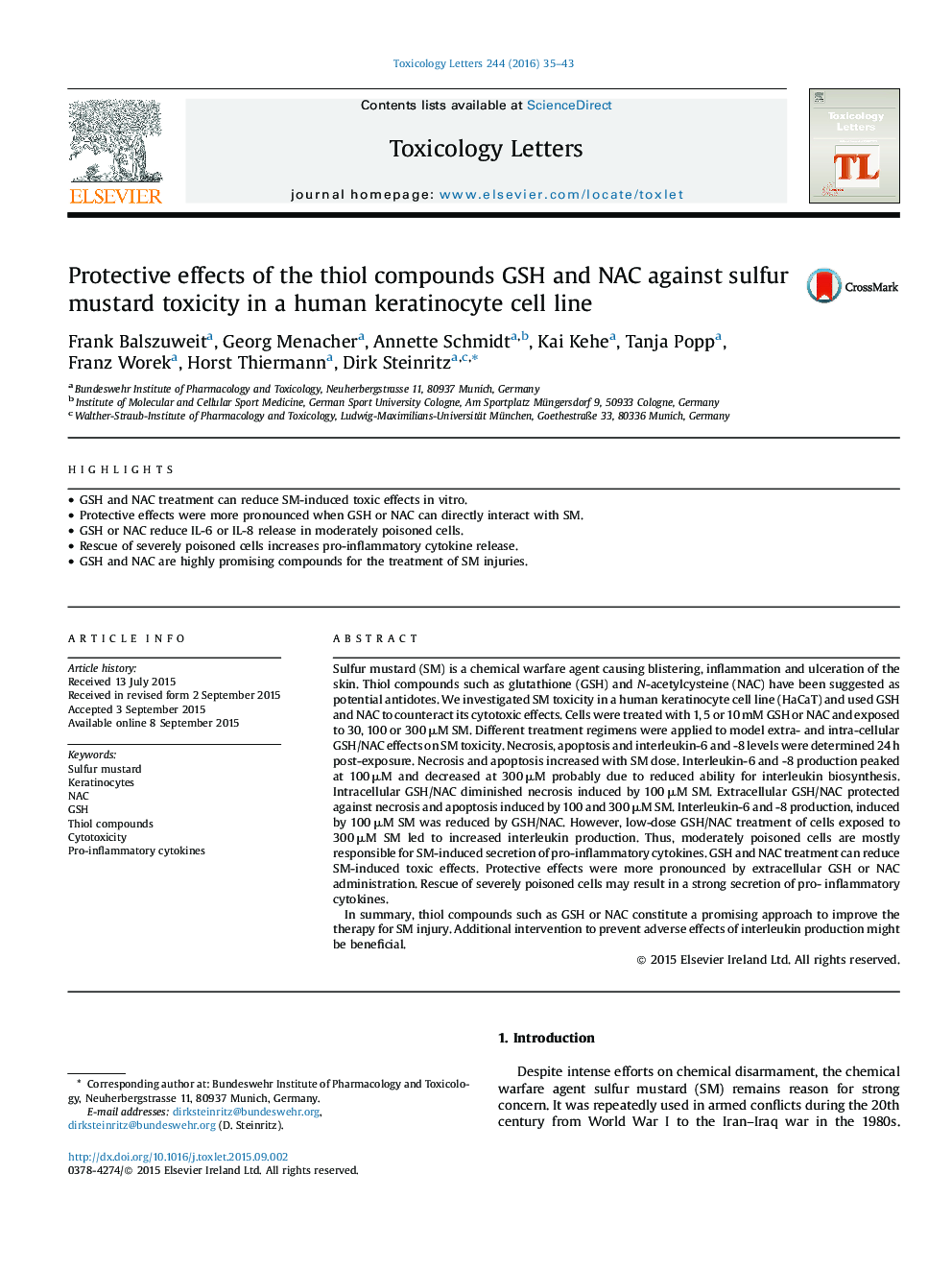| Article ID | Journal | Published Year | Pages | File Type |
|---|---|---|---|---|
| 5859835 | Toxicology Letters | 2016 | 9 Pages |
â¢GSH and NAC treatment can reduce SM-induced toxic effects in vitro.â¢Protective effects were more pronounced when GSH or NAC can directly interact with SM.â¢GSH or NAC reduce IL-6 or IL-8 release in moderately poisoned cells.â¢Rescue of severely poisoned cells increases pro-inflammatory cytokine release.â¢GSH and NAC are highly promising compounds for the treatment of SM injuries.
Sulfur mustard (SM) is a chemical warfare agent causing blistering, inflammation and ulceration of the skin. Thiol compounds such as glutathione (GSH) and N-acetylcysteine (NAC) have been suggested as potential antidotes. We investigated SM toxicity in a human keratinocyte cell line (HaCaT) and used GSH and NAC to counteract its cytotoxic effects. Cells were treated with 1, 5 or 10 mM GSH or NAC and exposed to 30, 100 or 300 μM SM. Different treatment regimens were applied to model extra- and intra-cellular GSH/NAC effects on SM toxicity. Necrosis, apoptosis and interleukin-6 and -8 levels were determined 24 h post-exposure. Necrosis and apoptosis increased with SM dose. Interleukin-6 and -8 production peaked at 100 μM and decreased at 300 μM probably due to reduced ability for interleukin biosynthesis. Intracellular GSH/NAC diminished necrosis induced by 100 μM SM. Extracellular GSH/NAC protected against necrosis and apoptosis induced by 100 and 300 μM SM. Interleukin-6 and -8 production, induced by 100 μM SM was reduced by GSH/NAC. However, low-dose GSH/NAC treatment of cells exposed to 300 μM SM led to increased interleukin production. Thus, moderately poisoned cells are mostly responsible for SM-induced secretion of pro-inflammatory cytokines. GSH and NAC treatment can reduce SM-induced toxic effects. Protective effects were more pronounced by extracellular GSH or NAC administration. Rescue of severely poisoned cells may result in a strong secretion of pro- inflammatory cytokines.In summary, thiol compounds such as GSH or NAC constitute a promising approach to improve the therapy for SM injury. Additional intervention to prevent adverse effects of interleukin production might be beneficial.
